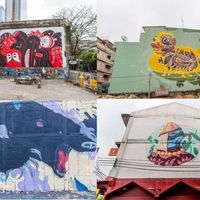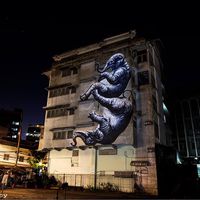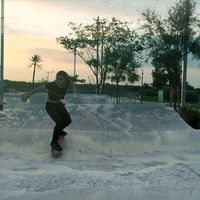Bangkok Creative District I Interview with David Robinson
 As part of the By people/In Cities series, ASEF culture360 contributor David Fernández takes a closer look Bangrak-Klongsan Creative District in Bangkok, Thailand. In this second article, he interviews David Robinson, Director of the Bangkok River Partners and member of the Creative District Foundation’s steering committee.
As part of the By people/In Cities series, ASEF culture360 contributor David Fernández takes a closer look Bangrak-Klongsan Creative District in Bangkok, Thailand. In this second article, he interviews David Robinson, Director of the Bangkok River Partners and member of the Creative District Foundation’s steering committee.David Fernández: What motivated you to start contributing to the development of the Creative District?
I have moved to Bangkok in 2002 and always thought the Chao Phraya River an under-utilised resource as far as leisure and tourism. So I was thrilled when I got the opportunity to run the Bangkok River Partners, a small group of business operators and property owners working together to attract Bangkokians and foreigners to the river. The River is one of the centers of Thai history, culture and commerce, so we also want to safeguard the authenticity of the riverside districts.

DF: What did you set out to achieve when you co-founded the Creative District? How is this taking shape and how do you think it can develop?
The riverside is already an interesting place to visit, but we also understood it needed to be a good place to live. It’s one of the oldest areas of the city, historically and culturally very important to the city. We call it real Bangkok.
The Creative District is a community initiative – an opportunity to work with people who have worked and lived in Bangrak and Klongsan for generations. The Creative District Foundation seeks to support local traders and artisans as well as create an environment that is appealing to creative individuals and industries looking for a place to ‘set up shop’. A working group formed and quickly identified six tracks of activity: art, design & digital, property preservation, urban planning, community, food. We have some 20 initiatives within this framework to showcase the unique and distinctive characteristics of this part of Bangkok.
We believe we need to balance new developments springing up along this part of the river with preservation of the built environment and support of local communities. We want to make sure we do not slip into gentrification. Rather, our aim is to help revitalise the area by working with the local community always respecting its history. We have started a dialogue with Crown Property Bureau and the Treasury Department on how to re-purpose old buildings rather than pulling them down. With the guidance of our members from Thammasat University, we are talking with Bangkok Metropolitan Authority on urban planning and improvement. We hope to foster collaboration between locals and newcomers who, by working together, can contribute to the community.
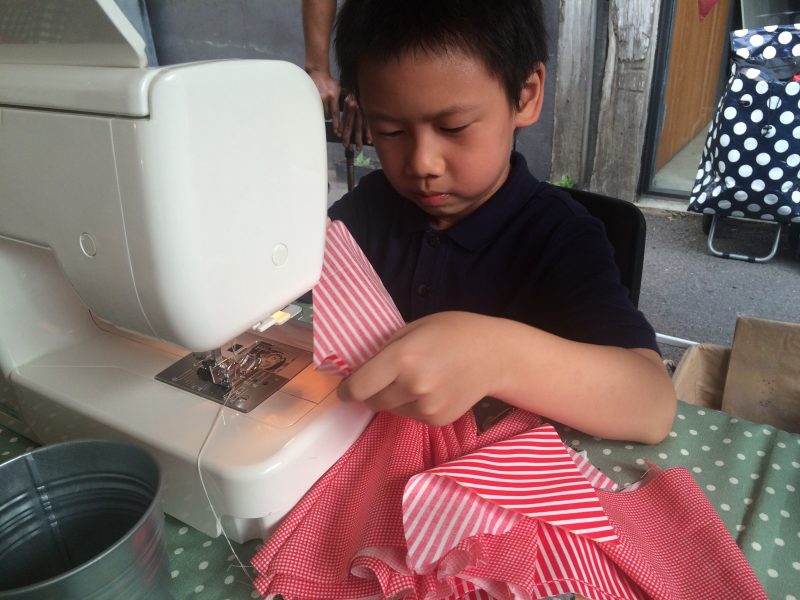
DF: How have your aims/expectations changed since you started developing the Creative District?
Some projects have developed quite fast while others will take time. We see this as a long-term project with some quick wins along the way. We believe we need to lead by example in developing Bangkok’s Creative District and hope to receive government support over time. We have been getting good media attention, particularly international coverage. The public, locals and foreigners alike, are very interested in what’s happening here. Exciting projects such as Buk Ruk urban street art and Co-Create Charoenkrung led by Thailand Creative and Design Centre (TCDC) have helped present the neighborhood to a wider audience. We know that things need to evolve at their own pace. The development must be organic so we do not leave anyone behind.
The community needs to participate in and have ownership of what’s happening in the district.
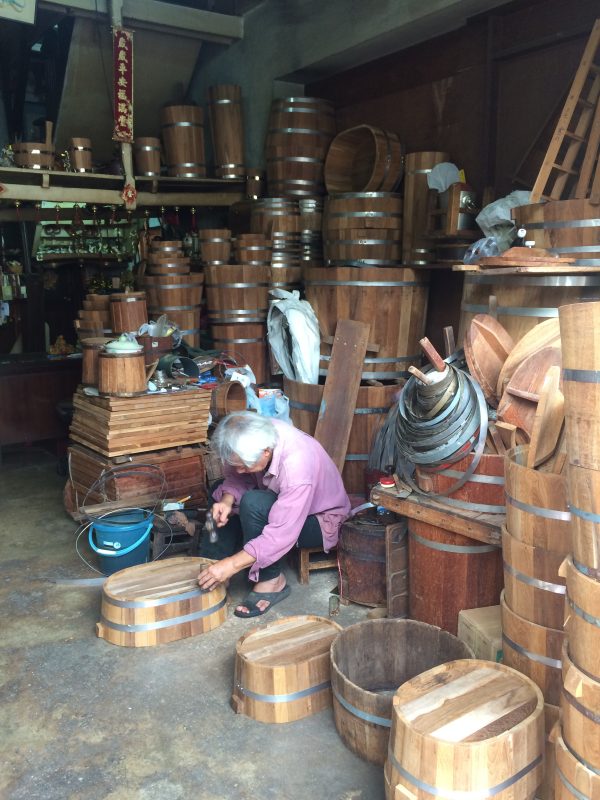
DF: What would you say has been the biggest thing that the development of the Creative District have taught you about the local creative arena?
Ten years ago the government announced their ambition to develop Thailand’s Creative Economy. Five years ago it was put on the back-burner but we are pleased to see that this year, it is being promoted as the way forward. We are working with art gallery owners, Thailand Creative and Design Centre (TCDC), local architects, professors of urban planning, local artisans and craftsmen, and entrepreneurs with the hope of populating the empty shophouses and buildings with small creative businesses.
I have been surprised by the interest from independent creatives, business people and institutions who have suggested opportunities for collaboration. And that’s the key. Our initiative relies on creative people with new solutions for ongoing challenges. Working together to build momentum and critical mass to achieve our long-term goals.

DF: How is the public in the neighbourhood reacting to this creative project and its developments?
Community engagement is crucial to our ambition, but it isn’t going to happen overnight. Community is our biggest challenge and our greatest opportunity. But first we need to build trust. We need to prove ourselves. For this, we hold regular townhall meetings were we invite people from all interests and backgrounds to participate: foreign embassy staff and local community workers, shopkeepers and university students. We are trying to engage different parties into the discussion, connecting the dots, finding opportunities for creative people coming to the district as well as local residents.
For example, Buk Ruk brought art and people to the streets of Bangrak. The feedback we received after the festival was very positive. Some local vendors didn’t quite understand what was happening but more people meant more sales so, all in all, they felt it was benefiting them and the community.
DF: How are you planning to attract new talent to the Creative District?
Of course we will take advantage of the unique physical streetscape of the district in order to attract creative people to the neighbourhood. But we are also hoping to convince CAT to provide the highest-speed internet in the Creative District. We’d like to see affordable accommodation and a special tax regime for the creative entrepreneurs establishing their businesses here. And of course, when TCDC relocates to Charoenkrung Road in February 2017 there will be a big influx of creative people ready to join our efforts.

DF: What are your plans for the future of Bangrak / Klongsan, do you have any specific goals you would like to attain in the future?
When I set out on this project I identified three public perceptions that we needed to overcome: the location is a long way away for many Bangkokians, transportation can be difficult, and the river is seen as dirty. We need to work together to address these issues and shift the perception.
My vision for the Creative District is as an enjoyable place to walk around. Green and shaded, less cars, and better transportation systems. The vacant shops and buildings will be occupied with boutiques of arts and crafts, eateries, bars, art studios and galleries. There will be theatre performance spaces, live music venues and boutique cinemas. Residents who have lived in the area for generations will be living alongside people who have moved here to enjoy the river life.
DF: Have you done any collaboration with any of the local creative platforms? How are you planning to engage the community?
We are always on the look out for opportunities to collaborate with the local community. Gallery hopping takes place on a Friday evening once every six-weeks. We worked closely with the team at BukRuk to make their second urban street festival a success. The Jam Factory is an active player, as are the many hotels along the river. River City has recently undergone a facelift and is actively looking for opportunities to work with the local community. Preparation is underway for TCDC relocation to the river next year, bringing with them their 30,000 members with an enlarged facility and expanded programs. Some of Bangkok’s most successful entrepreneurs are looking to move to the area. The signs are good.
___
Started in 2012, By people / In cities is a series of articles and interviews that aims to enhance the understanding of art and culture in Southeast and East Asia through individual stories and perspectives including artists, cultural practitioners, and policy makers.
___
Links:
- Bangkok River Partnership - www.bangkokriver.com
- Bangkok Metropolitan Administration - http://www.bangkok.go.th/
- Creative Thailand - http://www.tcdc.or.th/creativethailand/
- Thailand Creative and Design Centre (TCDC) - www.tcdc.or.th
- Buk Ruk - http://bukruk.com/festival/
- Creative District Gallery Hopping Night - https://www.facebook.com/galleryhoppingbkk/
___
David FERNÁNDEZ is a Spanish-born contributing writer based in Bangkok, Thailand. Currently working as freelance arts & cultural project manager and digital media consultant, he is also one of the co-founders of Cho Why multi-disciplinary project space. He previously co-founded Le Cool Bangkok arts & culture webzine and worked as content director. Formerly, he served as cultural attaché at the Embassy of Spain – Cultural Office in Bangkok.
Similar content
19 Jul 2016

